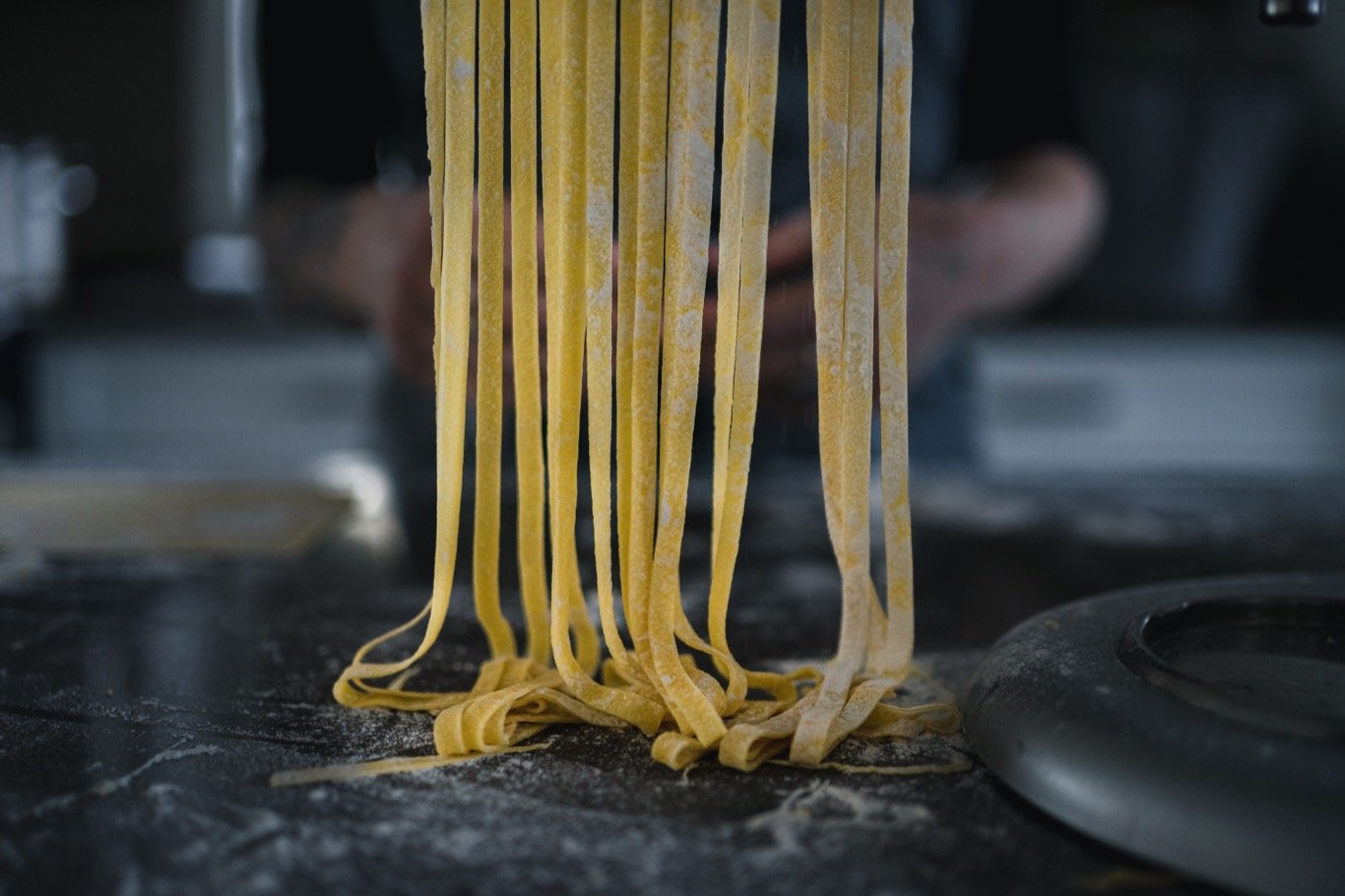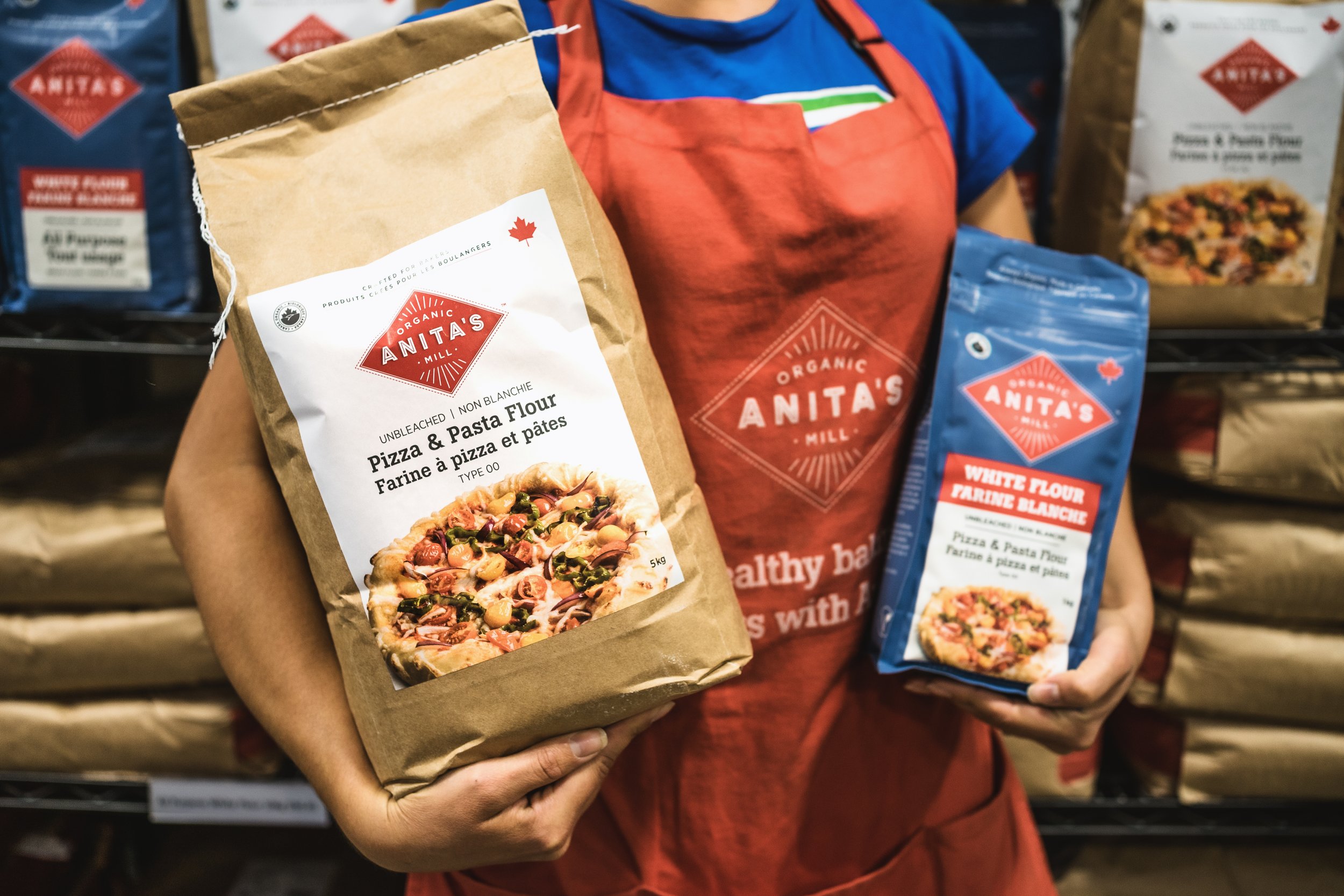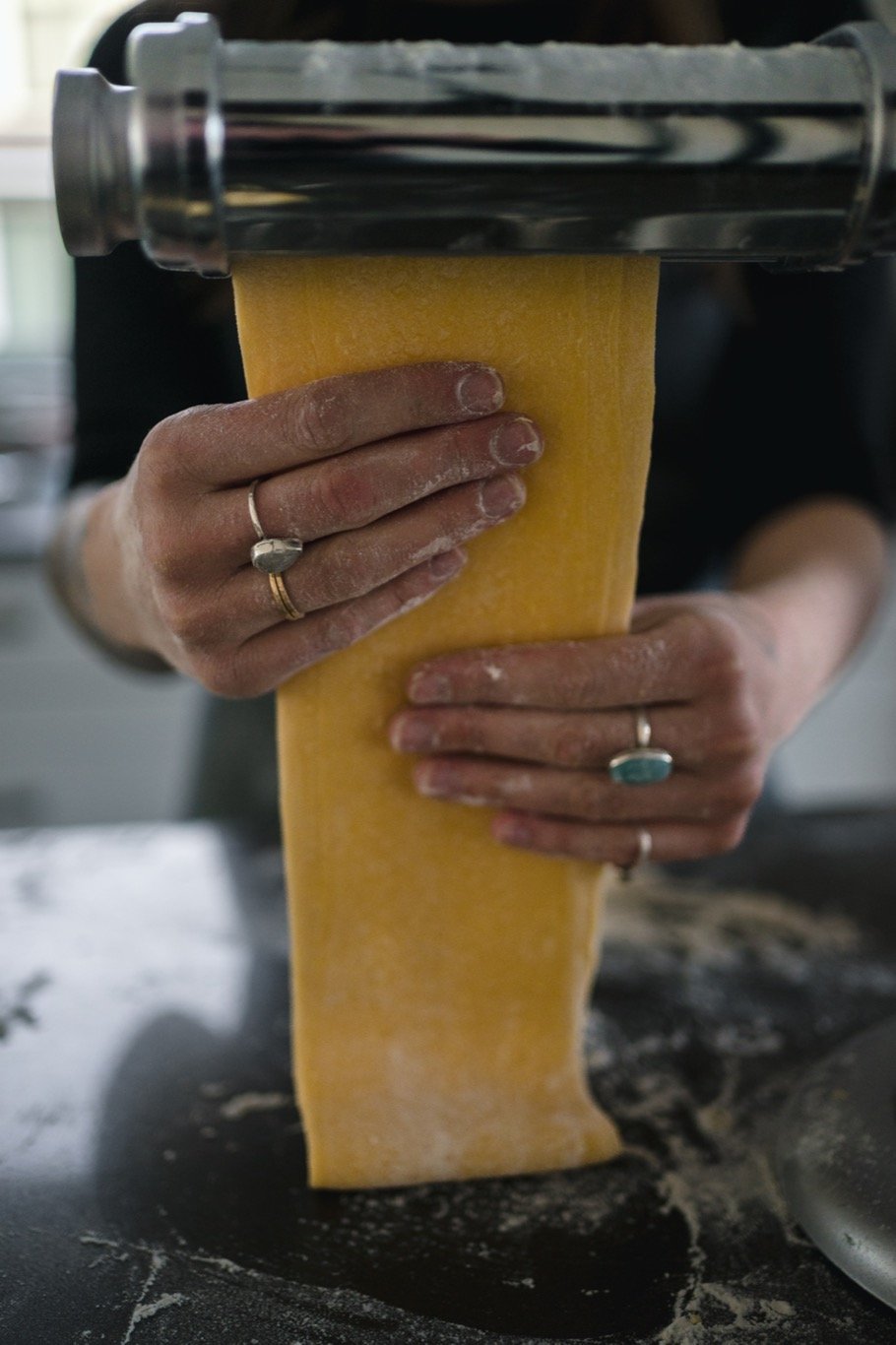Fresh Pasta Guide
Why fresh pasta?
Making fresh pasta at home is much simpler than you might think. But why go to the trouble at all?
The dry pasta you buy in the grocery store is made with flour and water, while fresh pasta is made using eggs instead of water. This makes a big difference in both flavour and texture. Pasta is made with a stiff dough and for this reason it is usually kneaded by hand. The dough can be rolled into noodles by hand with a rolling pin, or with a hand-cranked or automatic pasta machine.
What flour is best for making Pasta?
Making your own pasta also means you can control its texture by varying the flour you use. There are many varieties of flour that can be used to make mouth-watering pasta. Here are a few of our favourites, however keep in mind that whatever flour you have on hand is worth testing out!
Anita’s Organic Pizza & Pasta Flour
Type “00” flour is most commonly known as a classic Italian flour, so naturally it is the first flour you might think to use when making pasta. Anita’s Organic Pizza & Pasta flour is indeed the same type “00” flour that is all the rage, however it is grown and milled right here in Canada rather than being shipped from Italy, making it fresh, organic, and local to Canada. This soft wheat flour is milled finer than other white flours, and being lower in gluten it is lighter in comparison to other white flours. Its texture lends pasta dough an extra smooth, and tender noodle.
Anita’s Organic All Purpose Flour
This flour is also a good choice for pasta because of its smoothness and versatility. It has a light texture and a high gluten strength making it well suited for all types of baking recipes, including pasta!
Durum Wheat Flour
With a high protein and gluten strength, this flour will result in a more al dente noodle.
Fresh Pasta Recipe
Yields: 2 SERVINGS (800G)
Ingredients
500 g Flour (we used Anita’s Organic Pizza & Pasta Type “00” Flour)
5 Large eggs
4 Egg yolks
1 tsp Fine sea salt
Instructions
MAKING THE DOUGH
Combine salt and flour. Mound the flour and make a well in the centre. Add the eggs into the well.
Using a fork beat the eggs and slowly begin to incorporate the flour from inside the well into the eggs. Continue mixing until all liquid is absorbed.
Knead the dough by pressing the heel of your hand into the dough, folding the dough over, and rotating 45 degrees. Continue kneading for approximately ten minutes or until the dough begins to come together in a smooth ball. The dough will start off very dry but resist the urge to add more liquid, only doing so if you just can’t get the dough to come together. The dough should not be sticky. Add more flour and continue kneading if the dough feels at all sticky.
Cover the dough with plastic and let it rest for 30-60 minutes. This will allow the dough to fully hydrate and also allow the gluten to relax for rolling.
ROLLING OUT THE DOUGH
Cut approximately ⅕ of the the dough off, keeping the rest covered to prevent it from drying out.
Roll the piece of dough out with a rolling pin to approximately ¼”
Set your pasta machine to its lowest setting (usually 1) and pass the dough through. Run the dough through the lowest setting two more times.
Fold the sheet of dough into thirds, roll it flat with the rolling pin and pass the dough back through the lowest setting another two times.
Pass it through the next setting (2) two times.
Pass the dough through the remaining settings once each until you reach your desired thickness. Flour the sheets of dough and place on a parchment lined baking sheet.
Add the desired cutting attachment to your machine and feed 12” sheets of dough through for fettuccine style noodles.
Dust with flour and roll the dough into nests while you cut the remaining pasta. If your dough is on the wet side or it is a humid day and you are worried about the pasta sticking, let the noodles dry for 30-60 minutes before cooking or nesting the noodles.
COOKING
Bring 4 litres of salted water to a boil. (Salt the water until it tastes lightly seasoned. The reason for salting the water is to season the noodles.)
Boil the pasta for 90 seconds and then drain.
Do not rinse the pasta or add oil. The starch left on the pasta from boiling allows the sauce to adhere to the pasta.
Pesto Pasta Sauce
These smooth and tender noodles come together easier than expected and pair perfectly with this refreshing kale pesto. You can also substitute sunflower seeds, pumpkin seeds, cashews, or pine nuts in this pesto!













